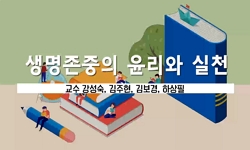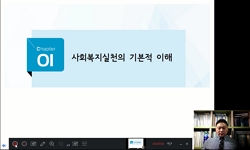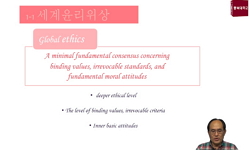The purpose of this paper is to consider Confucian orient, through the examination An Chang-Hoo(安昌後)’s life and his literary works, Sijo(時調) during his life as a moralist. This study also establishes the literary status of Sijo(時調) in ...
http://chineseinput.net/에서 pinyin(병음)방식으로 중국어를 변환할 수 있습니다.
변환된 중국어를 복사하여 사용하시면 됩니다.
- 中文 을 입력하시려면 zhongwen을 입력하시고 space를누르시면됩니다.
- 北京 을 입력하시려면 beijing을 입력하시고 space를 누르시면 됩니다.

安昌後 시조의 도학적 지향과 시가사적 의의 = A study on Confucian orient and literary significance in Sijo(時調) which written by An Chang-Hoo(安昌後)
한글로보기https://www.riss.kr/link?id=A104039928
-
저자
송재연 (서원대학교)
- 발행기관
- 학술지명
- 권호사항
-
발행연도
2015
-
작성언어
Korean
-
주제어
An Chang-Hoo(安昌後) ; moralist ; Confucian scriptures(儒敎經典) ; Sijo(時調) ; Confucian orient ; self-cultivation(修己) ; practical ethics ; teaching elucidation ; 安昌後 ; 도학자 ; 유교경전 ; 시조 ; 도학적 지향 ; 修己 ; 실천 윤리 ; 敎示的 說破
-
등재정보
KCI등재
-
자료형태
학술저널
-
수록면
111-136(26쪽)
-
KCI 피인용횟수
2
- 제공처
- 소장기관
-
0
상세조회 -
0
다운로드
부가정보
다국어 초록 (Multilingual Abstract)
An Chang-Hoo(安昌後) devoted himself to exploring the tenets of Confucian ethics, in focusing on Confucian cannons. Especially, he paid a constant effort to foster a mentality in self-cultivation. He thought that his ministry as a Sajok(士族) is dedicated to the study, so he made exertions to have grounding in Confucian. And he made an effort to develope human nature and to preserve a pure heart. His moral philosophical living and academic orientation had an effect on creating his literary works, such as chinese prose, chinese poetry and Sijo(時調). He created variety of literary works which including the practical problems that foster a mentality and understanding of human nature in selfcultivational view. And he enjoyed his literary works with relatives and friends in Hansundang(閒說堂).
In Sijo(時調), he expressed the human duty and reason of life in practical ethics, through Confucian cannons such as Mengzi(孟子) Lunyu(論語) and the teaching of the sages, such as Hanyu(韓愈) and Jungyi(程頤). In particular, he put more emphasis on encouragement of human nature and conduct of life, teaching attitudes of scholars, and stress of ethics of Hyo(孝). These is aimed at cultivation of morality, performing duties as a scholar, and establishment of family rituals. Also, in expression, he chose the ways of teaching the tenets of Confucian ethics to put into action rather than literary configuration These means that HyangchonSajok(鄕村士族) educated the ethics through form of Sijo(時調) in order to secure their position within the country in the changes of the 17th-18th centuries, and emphasized on the Confucian ethical practice to cultivate the qualities as a Sajok(士族).
Above all, it is important that An Chang-Hoo(安昌後) intended to overcome this crisis by offering an ethical solution through Sijo(時調), after he consulted the families of the crisis, based on the awareness of contemporary society. And another important point is that his Confucian orientation differ from other author, for example Hwang Yoon-Suk(黃胤錫), even though it is similar that both tried to teach ethics through Sijo(時調).
The purpose of this paper is to consider Confucian orient, through the examination An Chang-Hoo(安昌後)’s life and his literary works, Sijo(時調) during his life as a moralist. This study also establishes the literary status of Sijo(時調) in the literary history of the 18th century.
An Chang-Hoo(安昌後) devoted himself to exploring the tenets of Confucian ethics, in focusing on Confucian cannons. Especially, he paid a constant effort to foster a mentality in self-cultivation. He thought that his ministry as a Sajok(士族) is dedicated to the study, so he made exertions to have grounding in Confucian. And he made an effort to develope human nature and to preserve a pure heart. His moral philosophical living and academic orientation had an effect on creating his literary works, such as chinese prose, chinese poetry and Sijo(時調). He created variety of literary works which including the practical problems that foster a mentality and understanding of human nature in selfcultivational view. And he enjoyed his literary works with relatives and friends in Hansundang(閒說堂).
In Sijo(時調), he expressed the human duty and reason of life in practical ethics, through Confucian cannons such as Mengzi(孟子) Lunyu(論語) and the teaching of the sages, such as Hanyu(韓愈) and Jungyi(程頤). In particular, he put more emphasis on encouragement of human nature and conduct of life, teaching attitudes of scholars, and stress of ethics of Hyo(孝). These is aimed at cultivation of morality, performing duties as a scholar, and establishment of family rituals. Also, in expression, he chose the ways of teaching the tenets of Confucian ethics to put into action rather than literary configuration These means that HyangchonSajok(鄕村士族) educated the ethics through form of Sijo(時調) in order to secure their position within the country in the changes of the 17th-18th centuries, and emphasized on the Confucian ethical practice to cultivate the qualities as a Sajok(士族).
Above all, it is important that An Chang-Hoo(安昌後) intended to overcome this crisis by offering an ethical solution through Sijo(時調), after he consulted the families of the crisis, based on the awareness of contemporary society. And another important point is that his Confucian orientation differ from other author, for example Hwang Yoon-Suk(黃胤錫), even though it is similar that both tried to teach ethics through Sijo(時調).
국문 초록 (Abstract)
安昌後는 유교 경전을 읽고 그 이치를 궁리하였는데, 특히 修己의 측면에서 심성을 수양하는 데 부단한 노력을 기울였다. 그는 사족으로서 자신의 직분이 학문에 전념하는 것이라고 생각하고 성리학적 소양을 갖추는 동시에 참된 본성을 기르고 순수한 마음을 보전하기 위해 盡力하였다. 이를 통해 체득한 도학의 이치는 생활공간인 ‘閒說堂’에서 친족 및 여러 벗들과 더불어 文, 詩, 歌 등의 문학 작품으로 형상화되어 향유되었다. 다시 말해 그는 수양론적인 관점에서 인간의 본질에 대한 이해와 심성을 함양하는 실천적 문제를 다양한 양식의 문학 작품으로 창작, 향유하여 교화 효과를 높이고 있는 것이다.
그는 『論語』, 『孟子』 등의 유교 경전과 韓愈, 程頤와 같은 성현의 삶을 전고로 하여 인간의 도리와 삶을 살아가는 이치를 실천적 修己 윤리로 전환하여 시조로 노래하였는데, 특히 인간 본성과 처세에 대한 권면을 통한 人道의 함양, 학자의 자세 敎示를 통한 士로서의 직분 수행, 효 윤리의 강조를 통한 가문의식의 확립을 지향하고 있었다. 또한 그는 도학 이념을 문학적으로 형상화하기보다는 敎示的 說破에 더욱 초점을 맞춰 청자들이 그것을 온전하게 이해하여 실천할 수 있도록 하였다.
이것은 17․18세기 향촌사회의 변화 속에서 사회경제적 입지가 약화된 향촌사족들이 향촌 내에서 자신의 입지를 확보하기 위해 시조를 통해 도학의 이념을 교육하고, 修己를 위한 성리학적 실천 윤리를 강조하여 사족으로서의 자질을 함양하기 위한 것으로 볼 수 있다.
특히 安昌後는 자신이 살았던 당대 사회에 대한 인식을 토대로 가문의 위기를 살피고, 시조를 통해 위기를 극복하기 위한 윤리적 해결책을 제시하고 있었다는 점에서 의의가 확인된다. 그와 비슷한 시기를 살았던 黃胤錫의 시조와 비교했을 때 수양론적 관점에서 인간과 인간사에 대한 윤리를 시조로 노래했다는 점에서 유사하지만, 安昌後는 효의 윤리를, 黃胤錫은 부부 간의 윤리를 강조하고 있어 궁극적으로 도학적 지향을 달리 하고 있다.
이 논문은 도학자로서의 삶을 살았던 향촌사족 安昌後의 생애와 그의 시조 24수를 검토하여 그가 시조를 통해 구현하고자 했던 도학적 지향을 고찰하고, 나아가 18세기 시가문학사에서 그의 ...
이 논문은 도학자로서의 삶을 살았던 향촌사족 安昌後의 생애와 그의 시조 24수를 검토하여 그가 시조를 통해 구현하고자 했던 도학적 지향을 고찰하고, 나아가 18세기 시가문학사에서 그의 시조가 가지는 의의를 살펴보는 데 목적이 있다.
安昌後는 유교 경전을 읽고 그 이치를 궁리하였는데, 특히 修己의 측면에서 심성을 수양하는 데 부단한 노력을 기울였다. 그는 사족으로서 자신의 직분이 학문에 전념하는 것이라고 생각하고 성리학적 소양을 갖추는 동시에 참된 본성을 기르고 순수한 마음을 보전하기 위해 盡力하였다. 이를 통해 체득한 도학의 이치는 생활공간인 ‘閒說堂’에서 친족 및 여러 벗들과 더불어 文, 詩, 歌 등의 문학 작품으로 형상화되어 향유되었다. 다시 말해 그는 수양론적인 관점에서 인간의 본질에 대한 이해와 심성을 함양하는 실천적 문제를 다양한 양식의 문학 작품으로 창작, 향유하여 교화 효과를 높이고 있는 것이다.
그는 『論語』, 『孟子』 등의 유교 경전과 韓愈, 程頤와 같은 성현의 삶을 전고로 하여 인간의 도리와 삶을 살아가는 이치를 실천적 修己 윤리로 전환하여 시조로 노래하였는데, 특히 인간 본성과 처세에 대한 권면을 통한 人道의 함양, 학자의 자세 敎示를 통한 士로서의 직분 수행, 효 윤리의 강조를 통한 가문의식의 확립을 지향하고 있었다. 또한 그는 도학 이념을 문학적으로 형상화하기보다는 敎示的 說破에 더욱 초점을 맞춰 청자들이 그것을 온전하게 이해하여 실천할 수 있도록 하였다.
이것은 17․18세기 향촌사회의 변화 속에서 사회경제적 입지가 약화된 향촌사족들이 향촌 내에서 자신의 입지를 확보하기 위해 시조를 통해 도학의 이념을 교육하고, 修己를 위한 성리학적 실천 윤리를 강조하여 사족으로서의 자질을 함양하기 위한 것으로 볼 수 있다.
특히 安昌後는 자신이 살았던 당대 사회에 대한 인식을 토대로 가문의 위기를 살피고, 시조를 통해 위기를 극복하기 위한 윤리적 해결책을 제시하고 있었다는 점에서 의의가 확인된다. 그와 비슷한 시기를 살았던 黃胤錫의 시조와 비교했을 때 수양론적 관점에서 인간과 인간사에 대한 윤리를 시조로 노래했다는 점에서 유사하지만, 安昌後는 효의 윤리를, 黃胤錫은 부부 간의 윤리를 강조하고 있어 궁극적으로 도학적 지향을 달리 하고 있다.
참고문헌 (Reference)
1 전재강, "훈민시조 작가와 작품의 역사적 성격" 한국어문학회 79 : 491-516, 2003
2 박준규, "호남시단의 연구" 전남대 출판부 1998
3 이상보, "한설당 안창후의 시가 연구" 국민대 어문학연구소 9 : 5-40, 1991
4 금장태, "한국유학의 탐구" 서울대 출판부 1999
5 김석회, "존재 위백규 문학 연구" 이회문화사 309-341, 1995
6 정흥모, "조선후기 사대부 시조의 세계인식" 월인 211-236, 2001
7 金仁杰, "조선후기 鄕村社會 변동에 관한 연구 : 18, 19세기 「鄕權」담당층의 변화를 중심으로" 서울大學校 大學院 1991
8 정진영, "조선시대 향촌사회사" 한길사 1998
9 신연우, "사대부시조와 유학적 일상성" 이회문화사 2000
1 전재강, "훈민시조 작가와 작품의 역사적 성격" 한국어문학회 79 : 491-516, 2003
2 박준규, "호남시단의 연구" 전남대 출판부 1998
3 이상보, "한설당 안창후의 시가 연구" 국민대 어문학연구소 9 : 5-40, 1991
4 금장태, "한국유학의 탐구" 서울대 출판부 1999
5 김석회, "존재 위백규 문학 연구" 이회문화사 309-341, 1995
6 정흥모, "조선후기 사대부 시조의 세계인식" 월인 211-236, 2001
7 金仁杰, "조선후기 鄕村社會 변동에 관한 연구 : 18, 19세기 「鄕權」담당층의 변화를 중심으로" 서울大學校 大學院 1991
8 정진영, "조선시대 향촌사회사" 한길사 1998
9 신연우, "사대부시조와 유학적 일상성" 이회문화사 2000
10 송재연, "高應陟의 詩歌文學 연구" 서울대 2014
11 安昌後, "閒說堂遺稿"
12 안용백, "竹山安氏族譜" 국립중앙도서관 1982
13 "湖南邑誌"
14 설인경, "18세기 향촌사족의 시조 연구" 문창어문학회 47 : 197-233, 2010
15 김현식, "18세기 사족층 가사 연구" 서울대학교 대학원 2011
16 조태흠, "18․9세기 훈민시조의 변모와 그 의미" 한국문학회 15 : 147-167, 1994
동일학술지(권/호) 다른 논문
-
- 국문학회
- 심경호
- 2015
- KCI등재
-
- 국문학회
- 손태도
- 2015
- KCI등재
-
- 국문학회
- 정솔미
- 2015
- KCI등재
-
<사씨남정기>를 통해 본 소설사의 전변의 한 국면 - 사씨 형상의 형성배경과 의미
- 국문학회
- 류준경
- 2015
- KCI등재
분석정보
인용정보 인용지수 설명보기
학술지 이력
| 연월일 | 이력구분 | 이력상세 | 등재구분 |
|---|---|---|---|
| 2028 | 평가예정 | 재인증평가 신청대상 (재인증) | |
| 2022-01-01 | 평가 | 등재학술지 유지 (재인증) |  |
| 2019-01-01 | 평가 | 등재학술지 유지 (계속평가) |  |
| 2016-01-01 | 평가 | 등재학술지 선정 (계속평가) |  |
| 2015-12-01 | 평가 | 등재후보로 하락 (기타) |  |
| 2011-01-01 | 평가 | 등재 1차 FAIL (등재유지) |  |
| 2008-01-01 | 평가 | 등재학술지 선정 (등재후보2차) |  |
| 2007-01-01 | 평가 | 등재후보 1차 PASS (등재후보1차) |  |
| 2005-01-01 | 평가 | 등재후보학술지 선정 (신규평가) |  |
학술지 인용정보
| 기준연도 | WOS-KCI 통합IF(2년) | KCIF(2년) | KCIF(3년) |
|---|---|---|---|
| 2016 | 0.73 | 0.73 | 0.62 |
| KCIF(4년) | KCIF(5년) | 중심성지수(3년) | 즉시성지수 |
| 0.56 | 0.55 | 1.521 | 0 |




 KCI
KCI







